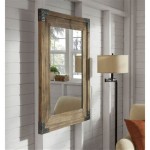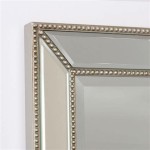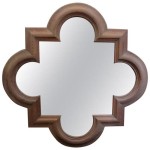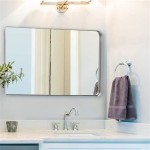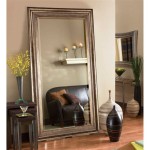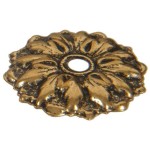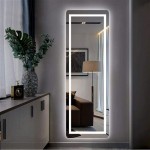Hanging Heavy Mirrors on Drywall Without Studs
Mounting a heavy mirror securely on drywall, especially without hitting a stud, requires careful planning and the right hardware. While studs offer the most reliable support, various solutions exist for hanging heavy objects directly on drywall. This article explores these methods, outlining the necessary tools, materials, and step-by-step instructions for secure installation.
Understanding the weight of the mirror is crucial. Lightweight mirrors can often be hung using simple adhesive hooks. However, for heavier mirrors, more robust solutions are essential to prevent damage to the wall and ensure the mirror's stability. Always check the manufacturer's instructions for recommended hanging methods and weight limits.
Several specialized drywall anchors are designed to hold heavy items. Toggle bolts offer substantial holding power. They work by spreading a wing-like mechanism behind the drywall, distributing the weight over a larger area. To install a toggle bolt, drill a hole slightly larger than the collapsed toggle. Insert the bolt with the toggle folded, then tighten the bolt until the toggle expands behind the wall, securing the fixture. Ensure the toggle is fully engaged before hanging the mirror.
Molly bolts are another option for heavy-duty hanging. These anchors require a specific installation tool to set them correctly. A hole is drilled into the drywall, and the molly bolt is inserted. Using the setting tool, the bolt is tightened, expanding a sleeve against the back of the drywall. This expansion provides a secure grip for hanging. The setting tool is essential for proper installation and ensures optimal holding strength.
Heavy-duty drywall anchors, sometimes referred to as “super” or “jumbo” anchors, are readily available. These anchors typically use a threaded screw mechanism that expands within the drywall, creating a strong hold. They are relatively easy to install and offer varying weight capacities, making them suitable for a range of mirror sizes. Always verify the weight limit of the chosen anchor against the mirror's weight.
French cleats offer a robust and discreet method for hanging heavy mirrors. A French cleat consists of two interlocking pieces of wood, one attached to the wall and the other to the back of the mirror. The angled design allows the two pieces to interlock, distributing the weight evenly along the wall. This method provides excellent stability and is especially suitable for very large or heavy mirrors.
When using any of these methods, precise measurements are critical. Mark the desired location of the mirror on the wall and carefully measure the distance between the hanging points on the back of the mirror. Transfer these measurements to the wall, ensuring they are level and accurate. Misaligned anchors can cause stress on the drywall and compromise the stability of the hanging.
Before drilling, it's advisable to use a stud finder to locate any wall studs in the vicinity. While not essential for using anchors, hitting a stud can provide added security. If a stud is located behind the desired hanging location, consider modifying the hanging hardware to utilize the added support.
Using a backing board provides extra reinforcement, especially for exceptionally heavy mirrors. A piece of plywood cut slightly smaller than the mirror can be mounted to the wall using multiple anchors or screws, distributing the weight over a larger area. The mirror is then attached to the backing board, providing additional stability and preventing the mirror from pulling away from the wall.
Selecting the correct screws for the chosen anchors is paramount. Using screws that are too short or too thin can compromise the integrity of the hanging. Consult the anchor packaging for recommended screw sizes and types. Over-tightening screws can also damage the drywall, so tighten them firmly but avoid excessive force.
Proper wall preparation is essential. Ensure the wall surface is clean and dry. If the wall is freshly painted, allow the paint to cure fully before hanging the mirror. This ensures proper adhesion of the anchors and prevents the mirror from shifting over time.
After installation, it's crucial to test the stability of the mirror. Gently tug on the mirror to ensure it is securely attached to the wall. If there is any movement or instability, re-evaluate the installation and ensure all anchors and screws are correctly installed.
Hanging a heavy mirror on drywall without hitting studs requires the right tools, techniques, and appropriate hardware. By following these guidelines and understanding the weight limitations of different hanging solutions, one can safely and securely mount even the heaviest mirrors, transforming any space with elegance and style.
How To Hang A Heavy Mirror On Drywall Quora

How To Hang A 31kg Mirror On Wall With Bunnings Work Community

A Better Way To Hang Heavy Mirror Hanging Brackets

How To Hanging A Mirror Without Stud Heavy

How To Hang Heavy Items Without A Stud
How To Hang A Heavy Mirror On Drywall Quora

How To Hang A Large Or Heavy Mirror
How To Hang A Large Framed Mirror Without Damaging It Or The Wall Quora

How To Hang A Heavy Mirror

How To Hang A Very Heavy Picture Or Mirror The Best


